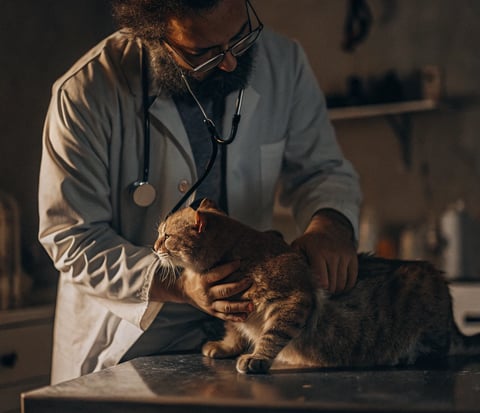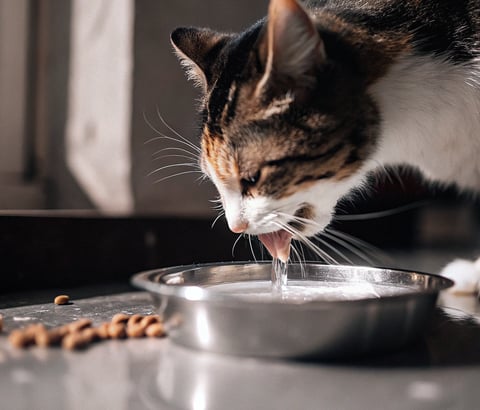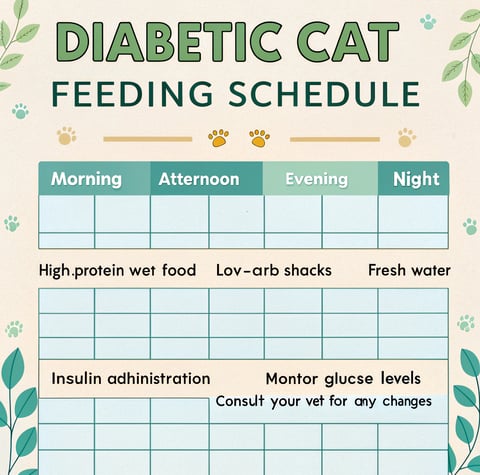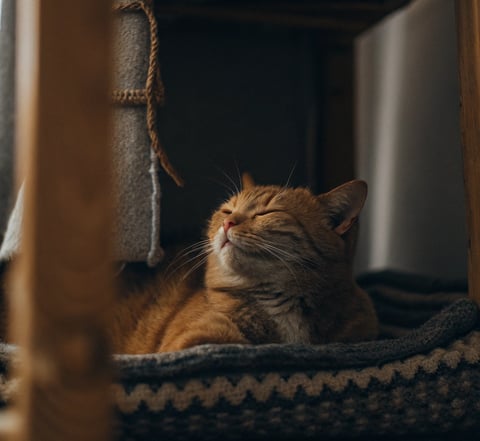Feline diabetes management
Feline diabetes management "Learn how to manage diabetes in cats with this guide on treatment, diet, and daily care tips. Ensure your feline friend lives a healthy, happy life!"
1/27/20253 min read


Managing Diabetes in Cats: A Comprehensive Guide
Diabetes in cats is a manageable condition that, with proper care and attention, doesn’t have to limit your feline companion’s quality of life. In this guide, we’ll cover the causes, symptoms, and treatment options for feline diabetes and provide practical tips to help you care for a diabetic cat.
Understanding Feline Diabetes
Feline diabetes, or diabetes mellitus, is a condition where the body fails to produce or properly use insulin, leading to high blood sugar levels. It’s most common in middle-aged or older cats and tends to occur more often in overweight cats.
Causes:
Obesity
Inactivity
Genetic predisposition
Poor diet (high in carbohydrates)
Types:
Type 1: Insufficient insulin production.
Type 2: Cells becoming resistant to insulin (more common in cats).


Learn more "Top Healthy Foods for Cats"
Recognizing Symptoms of Diabetes in Cats
Early detection is key to managing diabetes effectively. Look out for the following symptoms:
Increased Thirst and Urination: Cats may drink and urinate excessively.
Weight Loss Despite Increased Appetite: Losing weight while eating normally or more than usual can be a red flag.
Lethargy: Reduced energy or reluctance to engage in play.
Unkempt Coat: Cats with diabetes may neglect grooming, leading to a dull or greasy coat.


Check out "American Veterinary Medical Association: Diabetes in Cats"
Treatment Options for Diabetic Cats
1. Insulin Therapy
Most diabetic cats require daily insulin injections.
Your vet will guide you on how to administer insulin safely.
2. Diet Management
Low-Carbohydrate Diets: High-protein, low-carb foods help regulate blood sugar.
Prescription Diets: Your vet may recommend specialized diabetic cat food.
3. Weight Management
Gradual weight loss can improve insulin sensitivity in overweight cats.
Provide opportunities for exercise, such as interactive toys or laser pointers.
4. Glucose Monitoring
Regularly monitor your cat’s blood glucose levels using a home glucose meter or urine test strips.


Learn more "How to Spot Signs of Illness in Cats"
.Daily Care Tips for Diabetic Cats
1. Establish a Routine
Feed your cat at the same time every day to maintain stable blood sugar levels.
Administer insulin immediately after meals.
2. Provide Plenty of Fresh Water
Dehydration is common in diabetic cats, so ensure water is always available.
3. Monitor for Complications
Watch for signs of hypoglycemia (low blood sugar), such as trembling, weakness, or disorientation.
If symptoms occur, provide a small amount of honey or corn syrup and contact your vet immediately.
4. Keep Your Vet Involved
Regular vet check-ups are essential to adjust insulin doses or dietary needs as your cat’s condition changes.


Check out "Cornell University College of Veterinary Medicine: Feline Diabetes"
Long-Term Outlook for Diabetic Cats
With early diagnosis and consistent management, many diabetic cats live long, healthy lives. Some cats even achieve remission, particularly with early intervention and weight management.
Key Takeaways:
Consistency is crucial in feeding, insulin, and exercise routines.
Regularly communicate with your vet to ensure your cat’s care plan is effective.
Stay patient and positive—diabetic cats thrive with dedicated care.


